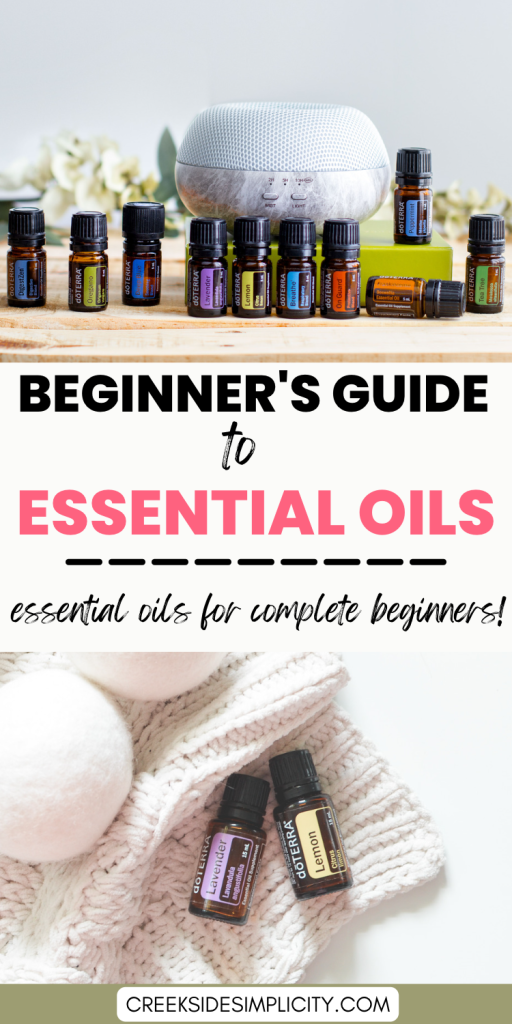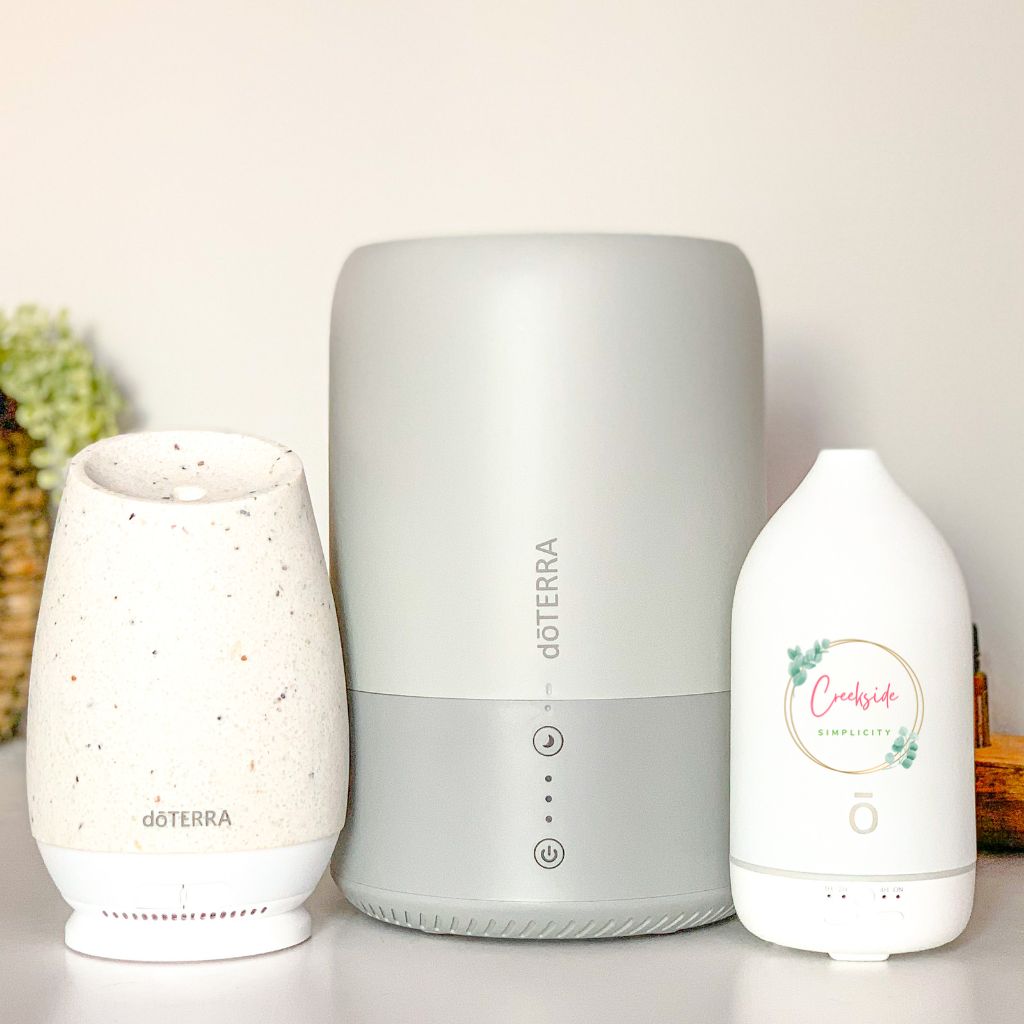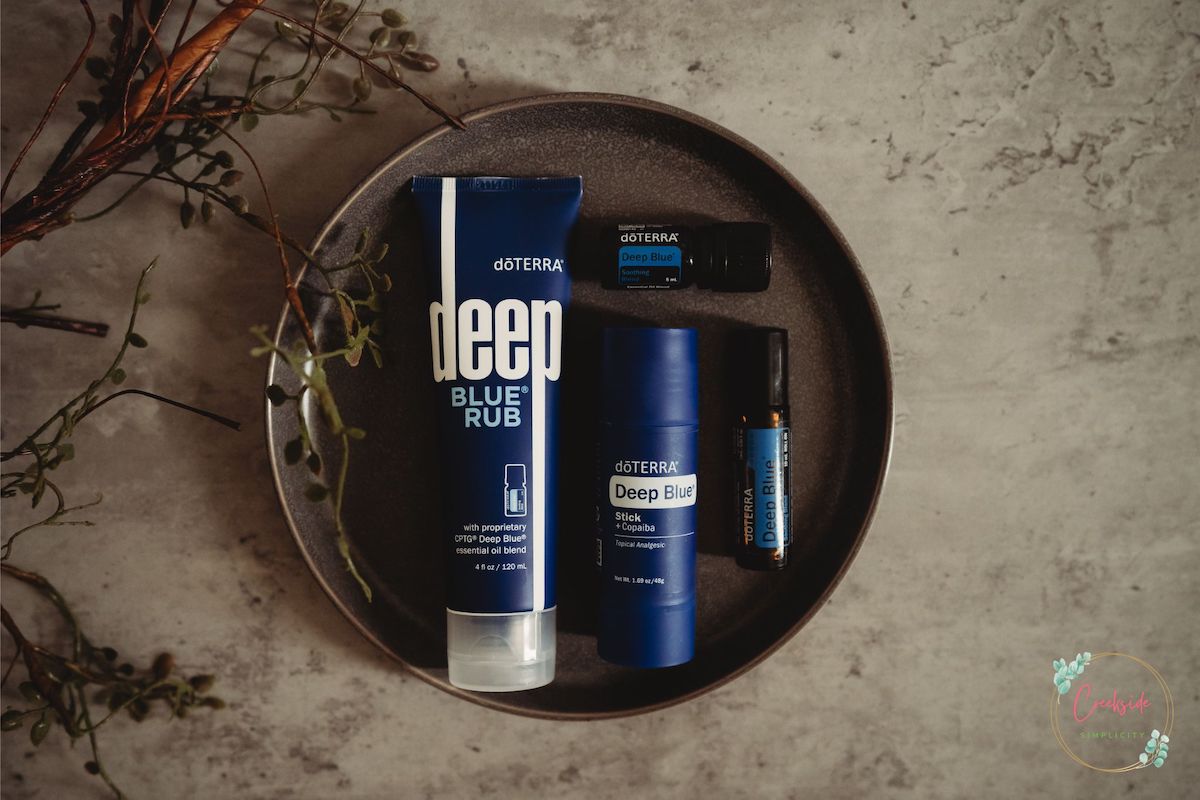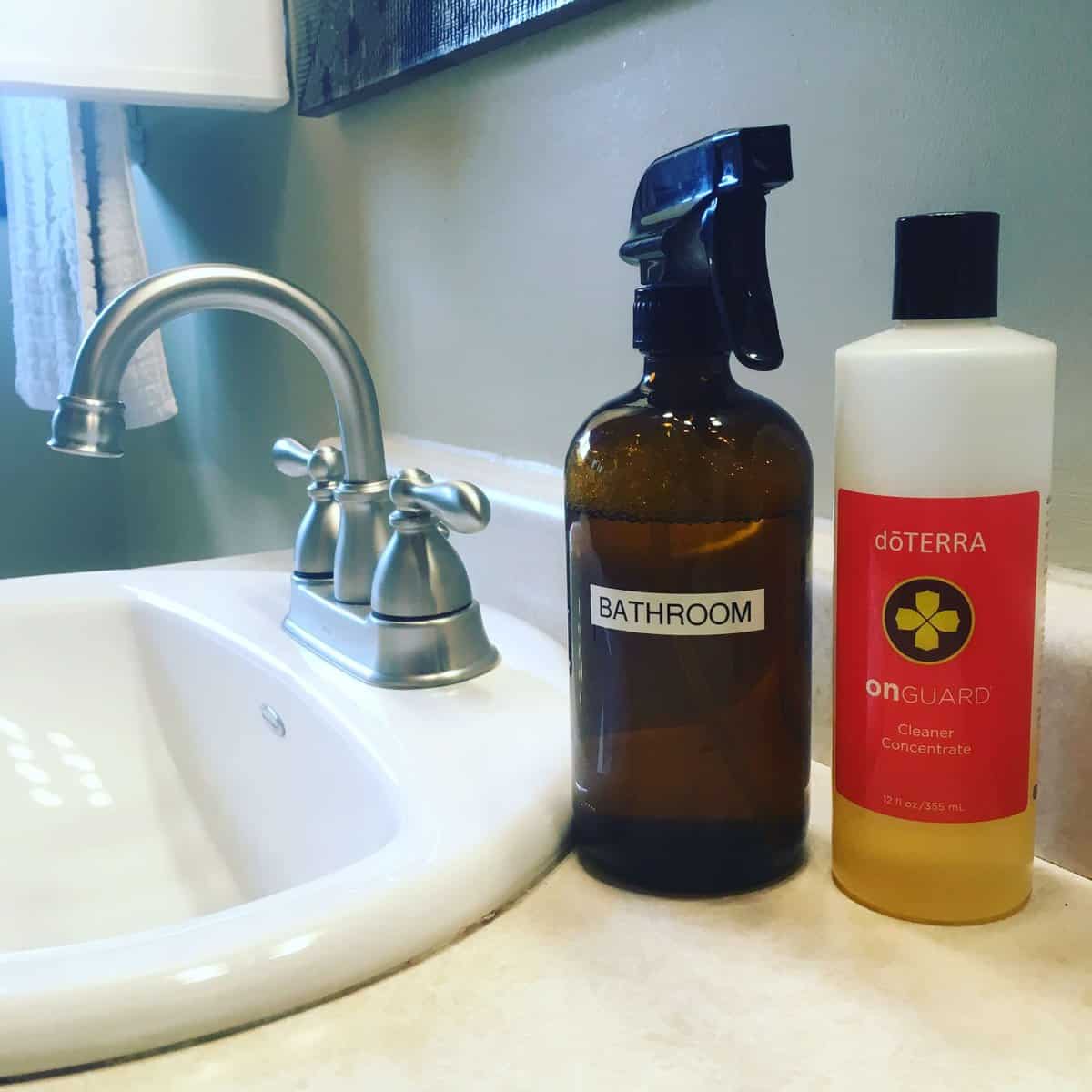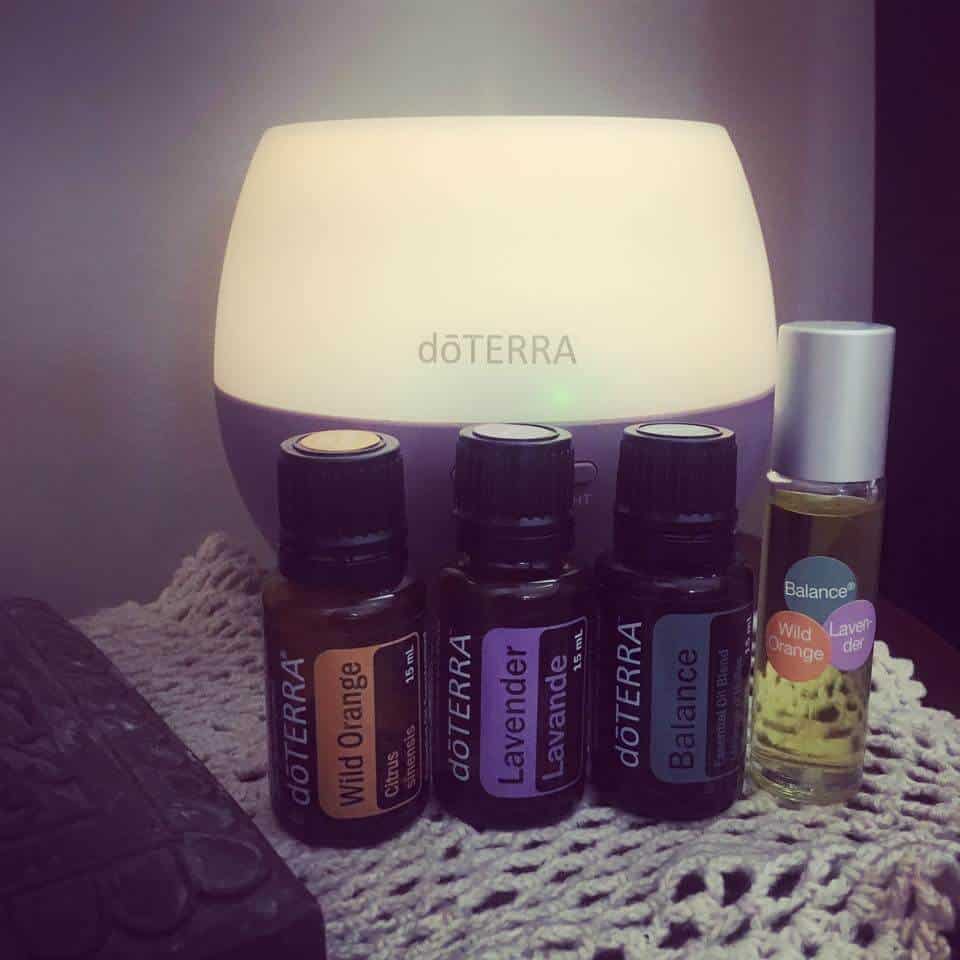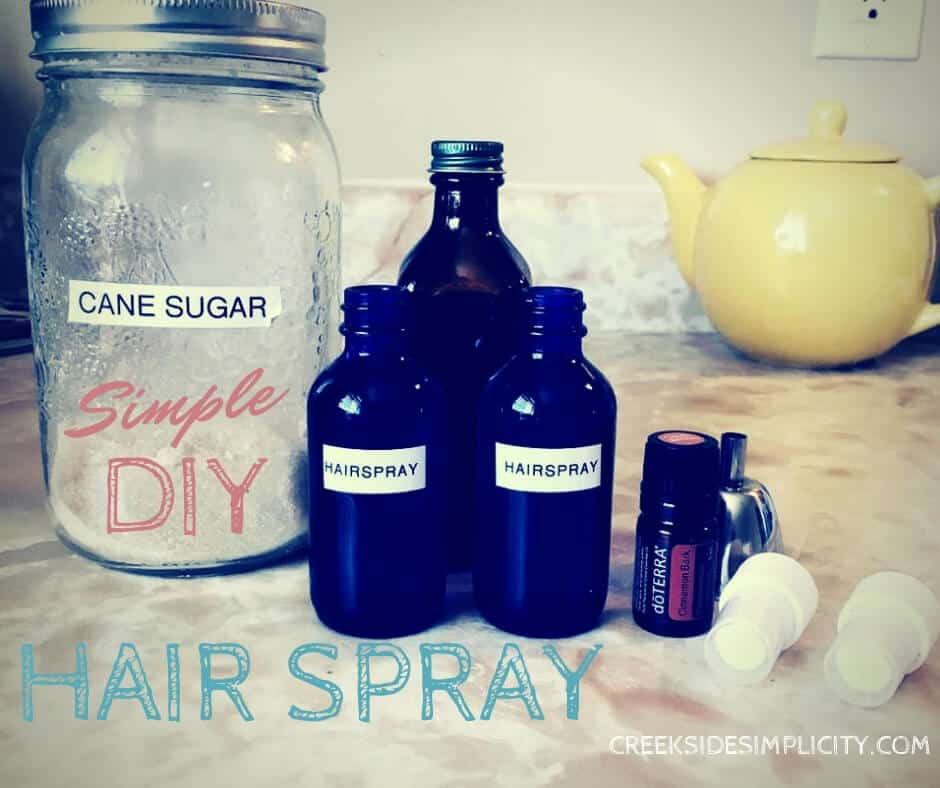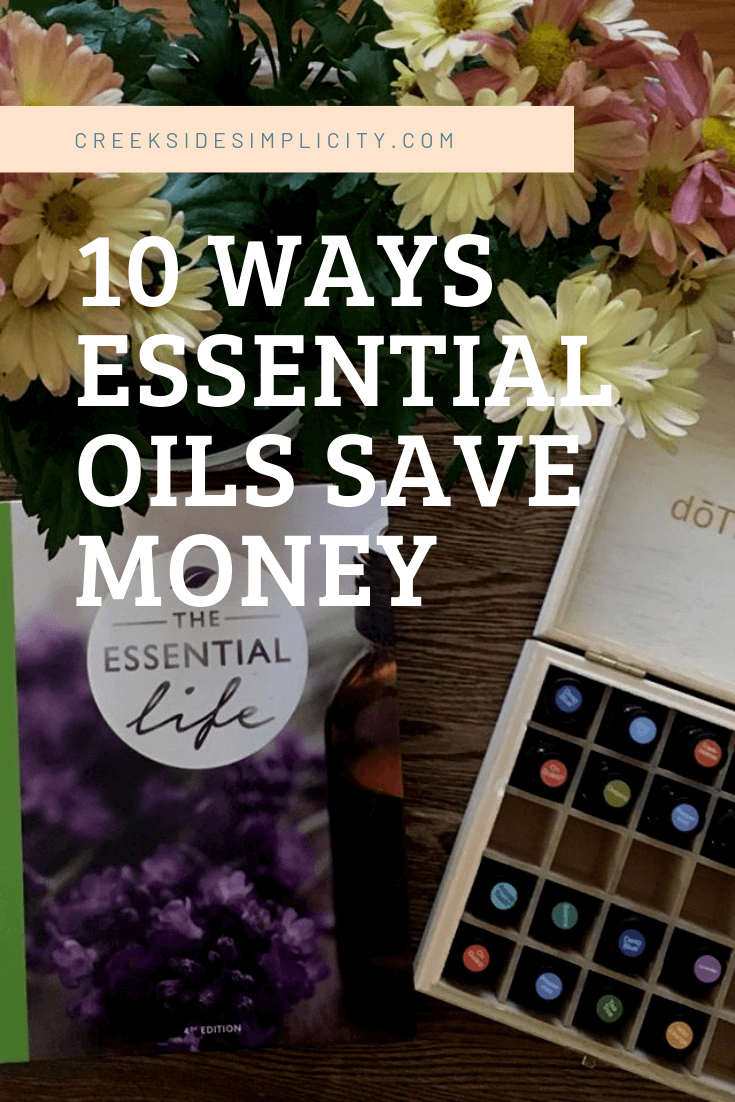Beginner’s Guide to Essential Oils
Are you interested in essential oils, but not sure where to start? This Beginner’s Guide to Essential Oils will teach you: What are essential oils, what are the 3 ways to use them, what are the best essential oils for beginners, and how to choose the best brand of essential oils.
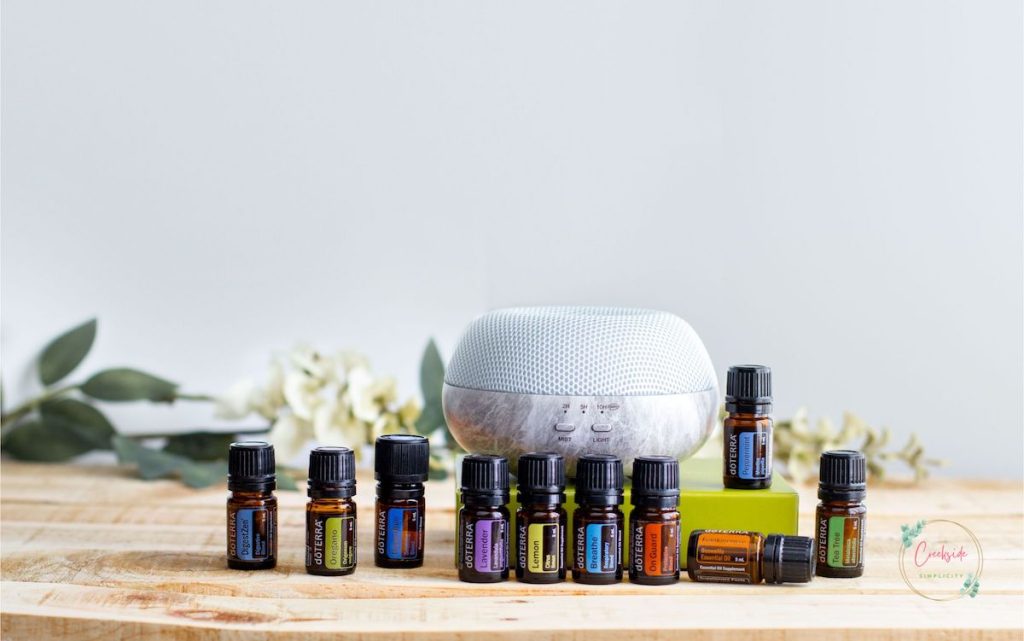
This post may contain affiliate links, which means if you make a purchase through one of these links, I make a small amount of commission at no extra cost to you. As an Amazon affiliate, I earn from qualifying purchases. See full disclosure here.
What Are Essential Oils?
Essential oils have been used since ancient times, for everything from beauty products, to spiritual and religious ceremonies, to alternative medicine. The ancient Egyptians were among the first people to use essential oils, incorporating them into their daily lives.
Interest in essential oils has surged in recent decades, with the increasing interest in natural and toxin-free living.
We use essential oils in our household for everything from supporting immunity and getting better sleep, to cleaning our home safely without using nasty chemicals!
Some examples of common essential oils include Lavender oil, Peppermint oil, Frankincense oil, Eucalyptus oil, Tea Tree oil, Rosemary oil and Lemon oil.
Essential oils are the aromatic compounds naturally found in plants.
Essential oils can be found in:
- seeds
- bark
- stems
- roots
- petals
- peels
…and other plant parts.
Essential oils are a plant’s natural defence mechanism. They help protect the plant from pests and disease. When we use essential oils, we transfer those benefits to ourselves.
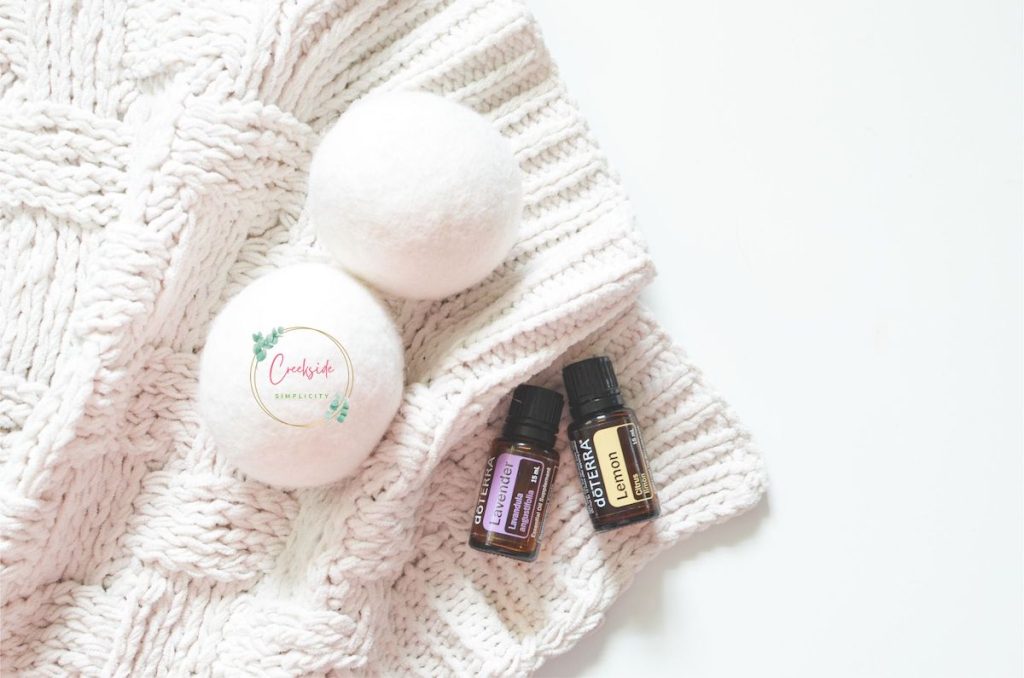
How Are Essential Oils Made?
The most common method of extracting essential oils from plants is the steam distillation method. Another way to extract essential oils is through cold pressing – this method is often used for citrus oils, since the essential oils are extracted from the peels of citrus fruits, not the fruit itself.
Making essential oils requires complex equipment, and is usually not done at home. Typically, essential oils are purchased from a reputable company.
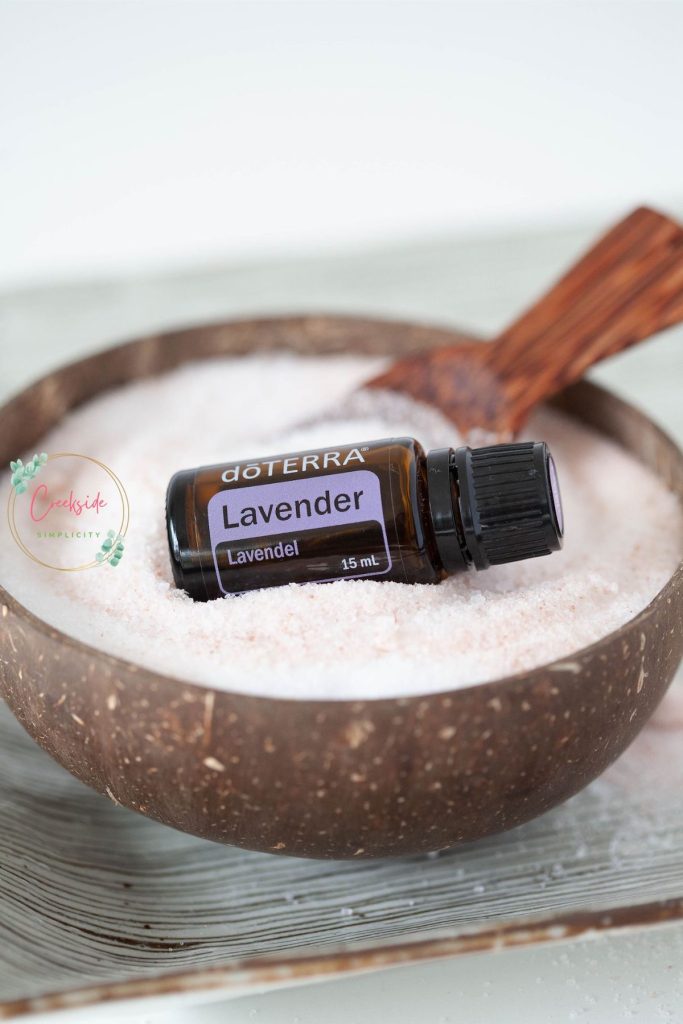
Why Quality Matters
If you’re interested in getting started with essential oils, then it’s important to know which essential oils to buy.
Not all essential oil brands are created equal.
There are no regulations in the essential oil industry, meaning anyone can write ‘100% Pure Essential Oils’ on a label, even if what the bottle contains is entirely synthetic.
To ensure that the essential oils you are purchasing are the highest quality, you’ll want to partner with a company who has done years of research on essential oils, does both internal and third party testing on each and every batch of essential oils, and provides full transparency for their testing.
To my knowledge, doTERRA is the ONLY brand of essential oils that offers all of the above. This is why I chose to partner with doTERRA for the essential oils I use for my family.
doTERRA essential oils are tested at multiple points throughout the production process, using their CPTG® process, to ensure there are zero contaminants or fillers. They are also tested for potency. Any essential oils that does not meet their stringent standards is rejected.
doTERRA also provides full transparency with every bottle of essential oil you purchase. Their Source to You website allows you to enter the code from your essential oil bottle and view the test results from your exact bottle.
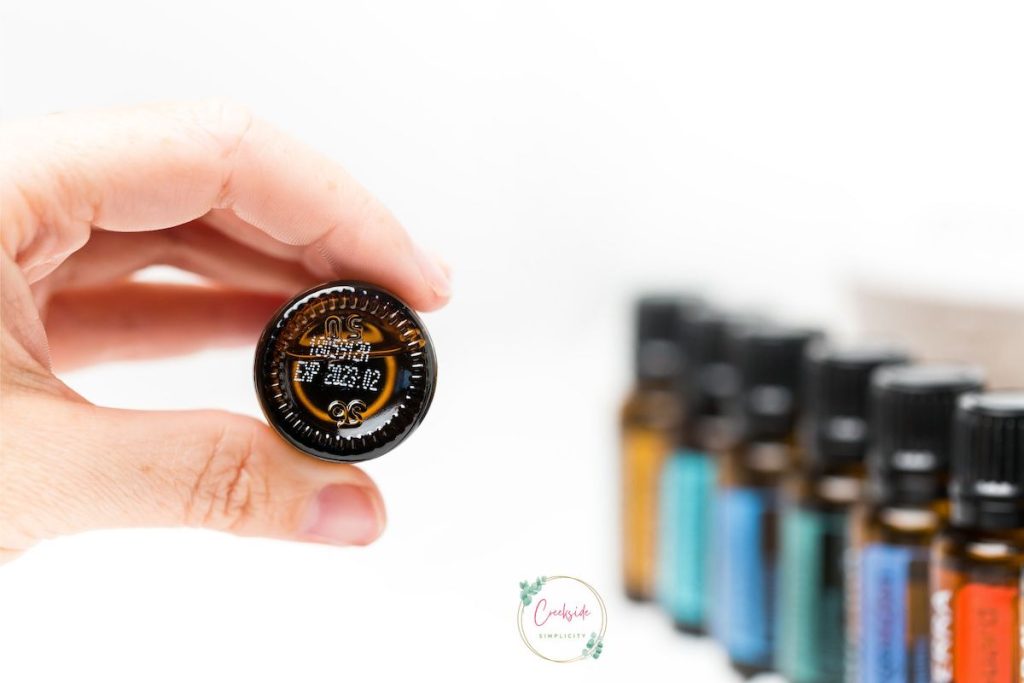
The two main things to consider when examining the quality of essential oils, are purity and potency.
Purity
Essential oil purity matters. If you use an oil that has been adulterated, contaminated, or loaded with synthetic fillers, you will not receive the full natural benefit of the plant. And in some cases, low-quality oils can even be dangerous and pose serious threats to your health.
Essential oils that aren’t pure can be contaminated with pesticides, contain chemical additives or fragrance enhancers, or be diluted with various carrier oils.
Potency
High quality essential oils are extremely potent. With the brand I use, one drop of peppermint oil is equivalent to 28 cups of peppermint tea!
You essentially get what you pay for. High quality essential oils will use a large amount of plant material to create each bottle of essential oil. Lower quality oils will have a low potency: they will be diluted; often with synthetics or carrier oils.
While the essential oil bottles may be cheaper, you will need to use a whole lot more to get the desired effect. Not to mention if they are cut with synthetics or large amounts of carrier oil, you may not get any therapeutic benefit at all. Or worse: they could cause harm.
Potency is also determined by where the plants are sourced. Plants for essential oils should be sourced from where they grow natively. That way they are grown in the optimal climate, soil conditions, and are unlikely to need pesticides or herbicides, as they are thriving in their native conditions.
3 Ways to Use Essential Oils
There are 3 main ways you can use essential oils: Aromatically, topically, and internally.
1. Aromatically
Essential oils can be very stimulating, calming, or soothing when inhaled. They can also cleanse and purify the air. Here are some ways you can experience the aromatic benefits of essential oils:
- diffuser – The most effective way to use essential oils aromatically, is with a cold mist diffuser. To use an essential oil diffuser, you’ll fill it with water to the fill line, add 3-5 drops of essential oil, and turn it on. A mist will come out of the top of the diffuser, quickly filling the air with the scent of essential oils. (See my review of my favourite essential oil diffusers).
- cotton ball – If you don’t have a diffuser, a simple way to experience the aromatic benefits of essential oils, is by placing a few drops on a cotton ball. You can place the cotton ball in drawers, or in a small jar, somewhere that you can inhale the essential oil as needed.
- inhale directly from bottle – You can also simple inhale the essential oil directly out of the bottle. For example, if you’re feeling stressed or anxious, take the lid off your lavender essential oil, hold it under your nose and breathe it in.
- your hands – if you don’t have a diffuser handy, you can simply place a drop of essential oil in your hands, rub them together, then cup them over your nose and inhale deeply. I love to do this with peppermint oil, which helps to wake me up, or lavender oil when I need to feel calm.
- warming pot – Some people like to add a few drops of their favourite essential oils to a warming pot, or to simmer them in a pot of hot water, and diffuse them that way. However, I don’t advise this method, as heating essential oils damages them, and reduces the therapeutic benefits. If you’re spending money on high quality essential oils, you want to ensure you’re getting the maximum benefit from them.
2. Internally
Some essential oils can be used as a dietary supplement for targeted wellness. You always want to make sure that your brand of essential oils is safe for internal use.
You’ve probably been using essential oils internally your whole life, you just didn’t realize it. Many foods, candies, gum, and even toothpaste are flavoured with essential oils.
Typically, the essential oil bottle will tell you which ways that essential oil can be used. If it can be used internally, it will likely have the term ‘supplement facts’ written on the bottle. Only the highest quality essential oils can be used internally.
Even with high quality brands, there are some essential oils that are not meant to be ingested. So always check your label!
Here are some ways to enjoy essential oils internally:
- drinking water – add a couple drops of essential oil to your drinking water. This adds a nice flavour to your drinking water, encouraging you to drink more, while also providing health benefits. Citrus oils, such as lemon, grapefruit, or wild orange, are excellent for internal cleansing. Our Metabolic Blend (MetaPwr) is a good choice for metabolic support.
- cooking & baking – you can use essential oils when baking, for example, adding peppermint oil to brownies or candy. Or add a drop of cilantro to your homemade salsa, or a little oregano on a toothpick, swirled into your spaghetti sauce.
- under tongue – for targeted wellness, you can add a drop or two of essential oils under the tongue. A good example of this is to take 1-2 drops of frankincense oil under your tongue daily, for cellular support throughout the body.
- gel cap – you can make your own capsules by putting drops of essential oils into a vegetable capsule and swallowing it. This is a good choice for hot oils, or for oils that you don’t like the taste of. Taking essential oils internally is excellent for systemic wellness.
3. Topically
Essential oils can be applied for topical benefit when diluted with a carrier oil. Carrier oils are usually vegetable oils, that dilute and ‘carry’ an essential oil onto your skin.
High quality essential oils are extremely potent, so you always want to dilute with a carrier oil to avoid skin irritation or allergic reactions.
A simple way to apply diluted essential oils topically, is by making a rollerbottle. You can fill a rollerbottle with essential oils and a carrier oil, and then you have a convenient way to apply essential oils to your skin.
Here is a handy chart with dilution ratios for essential oils:
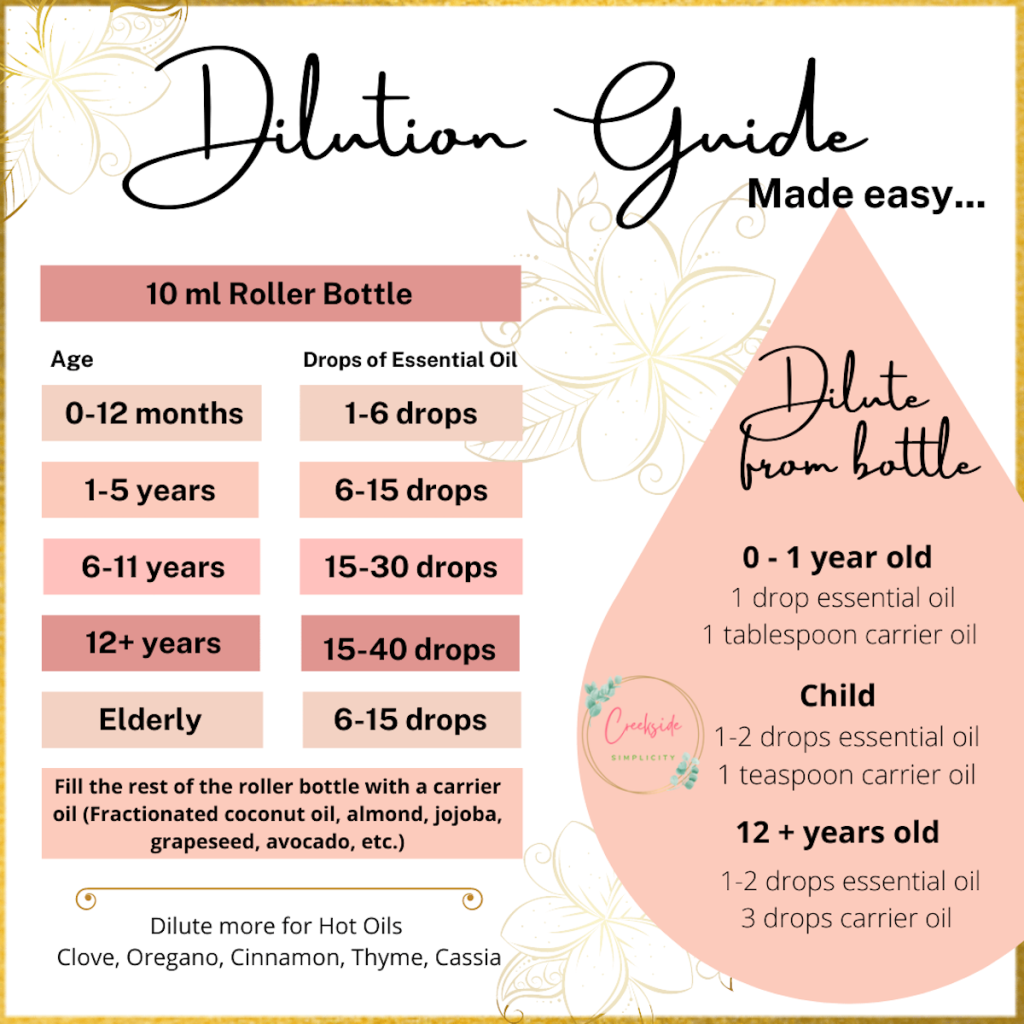
Some common carrier oils include:
- fractionated coconut oil
- sweet almond oil
- jojoba oil
- olive oil
Hot Oils
Different essential oils will require more or less dilution. For instance, some essential oils are considered ‘hot’ oils, and you need to use caution when using these essential oils. Oils like cinnamon bark, black pepper, cassia, and oregano are ‘hot’ oils and will burn the skin if not sufficiently diluted. Always dilute these oils heavily, and test a small area of your skin before applying to a larger area.
A great place to apply hot oils, is to the bottoms of your feet. The skin on the bottoms of our feet is tougher, and you are less likely to have a reaction there.
Photosensitive Oils
Some essential oils are photosensitive. This means if you apply them to your skin, and then go out in the sun, it could cause a reaction, such as a rash, or darkening of the skin.
Citrus oils are known for their photosensitive properties. Only apply citrus oils topically if you’re not planning to go out in the sun, or apply them to an area of your body that is unlikely to have sun exposure (such as under clothing, or on the bottoms of your feet).
Where to Apply Essential Oils
Topical use is an amazing way to target a particular area of concern. Here are some of the best areas to apply essential oils topically:
- bottoms of feet – all your nerve endings are in your feet, so this is a great way to have the benefits of essential oils carried throughout your entire body. Learning about reflexology is a wonderful way to understand where on the feet to apply essential oils.
- pulse points – used like a perfume, essential oils can be applied to pulse points. This is where I like to apply essential oils for mood support, because the heat from your pulse points makes them easy to smell.
- abdomen – when targeting digestive concerns, or wanting to avoid sun exposure, the abdomen is a great place to apply essential oils.
- directly on area of concern – think of topical application as a way to target your essential oils right where you need them. If you’re addressing a skin irritation (such as skin tags, minor scrapes, bug bites, rashes, sore muscles or joints, headaches, etc), then simply dilute your essential oil and apply it directly to the area of concern.
- back of neck – this is a great place to apply a cooling essential oil (ie – peppermint) when you need to cool the body down quickly.
Massage Therapy
If you want to experience profound benefits from essential oils, then combining them with a full body massage is the way to go. When I go for my monthly massage, I take my favourite massage blend with me – AromaTouch. My massage therapist then mixes drops of the AromaTouch blend with her carrier oil when doing the massage. It’s an incredibly relaxing, powerful experience!
What essential oils should I start with?
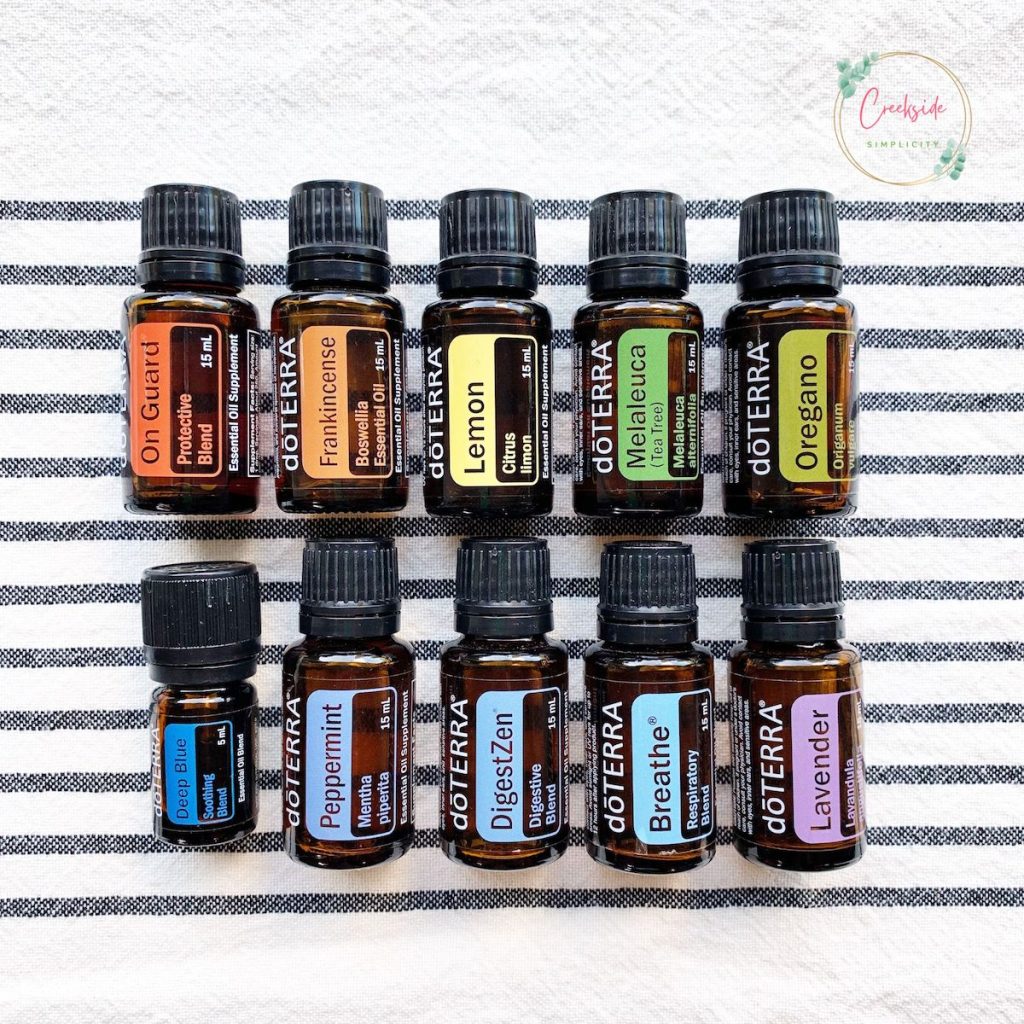
Beginners should choose essential oils that are both versatile and frequently used. This way, they can develop confidence and mastery in learning to use essential oils.
Here are the top 10 essential oils for beginners:
Essential Oil Singles
Essential oil singles are just the pure essential oil, not mixed with any other essential oils or carrier oils. These have a multitude of uses, and can be blended together to make your own custom blends.
Lemon Essential Oil
All citrus oils are a great choice for cleansing, and for mood support.
- cleanses the body, air, and surfaces
- promotes a positive mood
Lavender Essential Oil
Lavender oil is known as the Swiss Army knife of essential oils, because it can be used for so many different things. If you have no other essential oils, you should have a bottle of lavender oil.
- soothes occasional skin irritations
- promotes peaceful sleep
- eases feelings of tension & anxiousness
Peppermint Essential Oil
- promotes healthy respiratory function, clear breathing & digestive health
- soothes occasional stomach upset
- relieves head tension
Frankincense Essential Oil
Frankincense has earned its title as “The King of Oils” because of its versatility. When used topically, frankincense touts powerful anti-aging properties. It promotes cellular health, and the appearance of healthy-looking skin, evening out skin tone and minimizing blemishes.
- supports healthy cellular function
- promotes feelings of relaxation
- improves skin imperfections
Tea Tree Essential Oil
- cleansing & rejuvenating effects for skin
- promotes healthy immune function
- used to clean surfaces
Oregano Essential Oil
Oregano oil is one of the most potent and powerful essential oils and has been used for centuries in traditional practices. The primary chemical components of Oregano is carvacrol, a phenol that possesses antioxidant properties when ingested. Due to its high phenol content, caution should be taken when inhaling or diffusing Oregano essential oil; only one to two drops is needed.
- potent cleansing, purifying, antioxidant
- supports a healthy immune system, healthy digestion & respiratory function
- can be used in the kitchen for cooking (just put a little on the end of a toothpick – not too much – and swirl it into your sauce).
Essential Oil Blends
Essential oil blends are a mixture of specific essential oils, sometimes with a carrier oil added. Essential oil blends are usually made for a specific purpose.
OnGuard® (Protective Blend)
- purifies the air through diffusion
- excellent natural hand sanitizer
- used for cleaning surfaces in the home
DigestZen®/ZenGest® (Digestive Blend)
- helps maintain a healthy GI tract
- reduces bloating & gas
Breathe®/Easy Air® (Respiratory Blend)
- maintain healthy respiratory function
- promotes restful sleep & easy breathing
- can reduce snoring
Deep Blue® (Soothing Blend)
- soothes aching muscles & joints
- provides relief from head tension
Best Ways to Use Essential Oils for Beginners
What makes essential oils so incredible, is that they have such a broad range of uses. Their versatility makes them a must-have for any home. Here are some of the different ways you can use essential oils in your daily life:
Sleep
Some essential oils are known for their sleep-inducing benefits.
- Lavender
- Vetiver
- Melissa (Lemon Balm)
- Serenity (Restful Blend)
You can use essential oils for sleep, by making a spray and spritzing your pillow before bedtime, applying oils to the bottoms of your feet, or diffusing oils in an essential oil diffuser on your bedside table.
Here are the best essential oils to use for sleep.
Cleaning
Essential oils are excellent for cleaning your home without using harsh toxins. It’s easy to make your own homemade cleaning products with essential oils. It saves money, reduces waste, and helps to eliminate toxins from your home.
Here are some of my favourite essential oil cleaning recipes.
Skin
Essential oils can be used to support the skin. Some of my favourite essential oils for skin support include frankincense, lavender, and tea tree essential oils.
When applying essential oils topically, it’s important to dilute them. My preferred carrier oil is fractionated coconut oil, but other oils such as jojoba oil, olive oil, or almond oil can be used.
- soothe skin irritations
- reduce fine lines and wrinkles
- promote healthy cells
First Aid
Essential oils make a great addition to your all-natural first aid kit! Some of my favourite essential oils for first aid include lavender, tea tree, Deep Blue, and Frankincense. They can be used for:
- bug bites
- bee stings
- skin irritations
- minor cuts & scrapes
- muscle aches
- minor injuries
Wellness
Essential oils can be used to support overall wellness. Instead of reaching for your medicine cabinet, reach for essential oils instead. They can be used for:
- digestive support
- immune support
- head tension
- aches & pains
- nervous system support
Kids & Pets
With caution, essential oils can be used to support the health and well-being of children & pets. It’s important to proceed with caution and do your research before using oils on children & pets. They will require extra dilution and care in which oils you choose.
Personal Care
Essential oils can be used in your beauty routine and personal care in a variety of ways. They are an excellent addition to homemade toothpaste, skin care products, and hair care. doTERRA sells many pre-made personal care products that are toxin-free and include essential oils. Or, if you prefer, you can make your own!
Stress & Mood Support
When essential oils are inhaled, they go directly to the limbic system of the brain. The limbic system is where we process our emotions, behaviours, sense of smell, and long-term memory.
“Interestingly the limbic system also plays a role in controlling several unconscious physiological functions, such as breathing, heart rate, and blood pressure. Therefore, some people claim that essential oils can exert a physical effect on your body” –Healthline
Some of my favourite essential oils for mood support include:
- Lavender
- Lemon
- Wild Orange
- Serenity
- Balance
- Adaptiv
How to Buy Essential Oils
The best way to purchase essential oils is with one of our starter kits. Our starter kits are specially designed with the beginner in mind, containing essential oils that serve many common purposes.
My favourite starter kits are the Home Essentials Kit, which includes our top 10 essential oils plus a diffuser, or the Healthy Start Kit, which includes smaller bottles of the top 10 oils plus a diffuser.
Our essential oil starter kits are discounted, meaning they save you money, PLUS they include a free wholesale membership, which gets you 25% off anything you purchase for the next year.
Partner with Someone you Trust
If you’re brand new to essential oils, you will probably want guidance as you’re getting started.
When you buy essential oils off a shelf at a store, you are basically on your own to figure out how to use them safely. You’ll be left to just Google everything, likely leaving you more confused than when you started.
If you partner with a Wellness Advocate like myself, you get guidance on your essential oil journey, you’re not left to figure it out on your own.
(Do you know that you can become a Wellness Advocate too, and earn money by sharing essential oils either online or in person? Learn more here).
When you order a starter kit through me, you’ll also receive:
- An email series guiding you through how to use your essential oils in the safest, most effective way
- Links to my favourite tools, resources, and usage guides
- An ‘I have my oils, now what’ eBook that is FULL of usage instructions, dilution guides, and tons of essential oil recipes to help get you started
- Access to our Members’ Only facebook group where you’ll receive support & continuing education on your journey
To get started with essential oils, go ahead and click the button below to learn more, and to order your starter kit:
Want to Take a Deeper Dive?
There is so much more information I’d love to share about essential oils for beginners, but if I’d included it here, this post would get incredibly long! If you want a deeper dive into the basics of essential oils, then I invite you to take my free Intro to Essential Oils course. This course will be delivered via a series of emails, where each day, you will get an email reviewing one aspect of essential oils. This course is perfect for those who are ready to take a deeper dive into the world of essential oils.
Pin It for Later
Click the Pin It button in the top left corner of the graphic below, to save this post to your favourite natural living Pinterest board!
